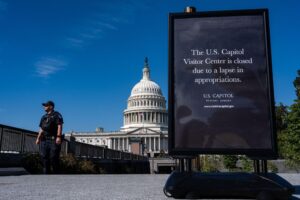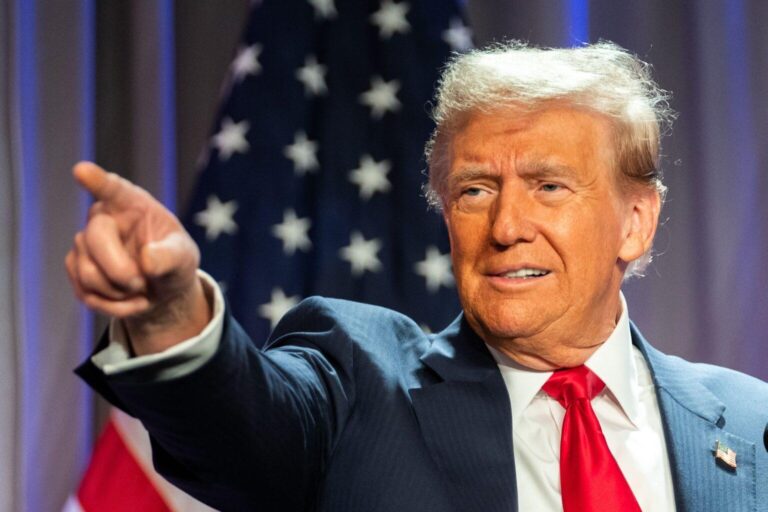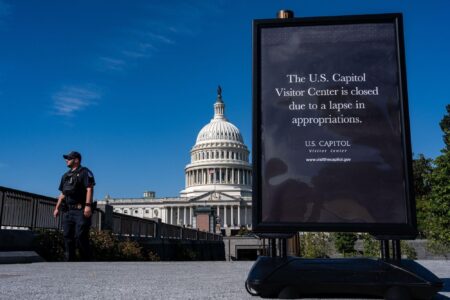Redefining Presidential Power Amid Political Upheaval
The political arena in Washington has undergone significant transformation in recent years, challenging entrenched traditions and sparking intense debates about the extent of executive power. Legal scholars, policymakers, and constitutional experts are actively dissecting the ramifications of unprecedented presidential maneuvers that test the limits of constitutional authority. Central to these discussions are critical questions regarding the permissible reach of executive orders, the effectiveness of the system of checks and balances, and the evolving definition of presidential privileges. These contentious issues have not only stirred legislative chambers but also engaged the public in a broader conversation about the Constitution’s adaptability in modern governance.
Several pivotal factors are driving this constitutional discourse:
- Broadening executive control over international relations and homeland security
- Controversial invocation of emergency powers circumventing legislative consent
- Legal confrontations arising from disputed executive actions
- Legislative pushback aimed at reclaiming institutional authority
These developments set the stage for landmark judicial decisions that could either restrict or reinforce an empowered presidency. As these debates progress, the foundational framework of American government faces critical reassessment, with profound implications for how future leaders exercise executive power.
| Constitutional Concern | Present Condition | Possible Consequence |
|---|---|---|
| Executive Order Utilization | Marked increase in frequency and breadth | Potential imposition of judicial constraints |
| National Emergency Declarations | Expanded use without Congressional consent | Legislative countermeasures anticipated |
| Separation of Powers | Increasingly ambiguous boundaries | Reinforcement of legislative prerogatives |
Legal Perspectives on Executive Limitations and Authority
In light of recent developments, constitutional authorities and legal analysts are intensifying their examination of the executive branch’s permissible scope. This scrutiny arises amid extraordinary presidential initiatives that raise critical questions about the expansion of executive power absent Congressional endorsement or judicial oversight. Core issues under review include the constitutional interpretation of emergency powers, the legitimacy of executive orders, and the president’s influence over autonomous federal agencies.
To clarify these concerns, experts have proposed a framework highlighting potential executive overreach contrasted with constitutionally sanctioned authority:
| Presidential Measure | Possible Legal Objection | Consequences |
|---|---|---|
| Issuance of sweeping executive orders | Litigation by Congress alleging constitutional overstep | Judicial rulings may limit future executive directives |
| Defiance of Congressional subpoenas | Charges of contempt and obstruction | Escalation of inter-branch conflicts |
| Employment of emergency powers for policy implementation | Constitutional challenges questioning emergency scope | Potential curtailment of unilateral executive actions |
Legal commentators stress that the resolution of these disputes could fundamentally reshape executive authority for decades. Whether these issues culminate in definitive Supreme Court decisions or protracted judicial proceedings remains a critical focal point for observers nationwide.
Impact on Government Branch Dynamics and Power Distribution
The ongoing confrontations between the executive branch and Congress during the Trump era have triggered a significant reassessment of presidential power. This contest threatens to alter the traditional checks and balances system that has long underpinned American democracy. With the surge in executive orders and challenges to congressional oversight, the demarcation between branches has become increasingly indistinct, raising alarms about potential power imbalances. Meanwhile, the judiciary has assumed a critical role, arbitrating disputes between expansive executive claims and legislative resistance, often setting influential legal precedents.
Experts caution that these conflicts transcend mere political rivalry, potentially instituting lasting constitutional transformations. Notable consequences include:
- Augmented executive discretion: Future presidents may exercise broader unilateral authority, reshaping law enforcement and policy execution.
- Legislative innovation: Congress might develop novel oversight strategies or enact clearer statutory boundaries to constrain executive overreach.
- Judicial prominence: Courts could increasingly serve as decisive arbiters in inter-branch power struggles, influencing constitutional interpretation.
| Government Branch | Anticipated Change | Long-Term Impact |
|---|---|---|
| Executive | Broadened unilateral initiatives | Heightened centralization of power |
| Legislative | Enhanced oversight frameworks | Adaptive and responsive lawmaking |
| Judicial | Expanded role in resolving power disputes | More proactive constitutional adjudication |
Strategies to Enhance Accountability and Oversight
Maintaining a balanced distribution of presidential power requires robust oversight mechanisms, especially amid the evolving political climate in Washington. Key stakeholders advocate for strengthened congressional oversight through intensified investigations and greater transparency mandates. Empowering legislative committees with increased funding and specialized personnel can facilitate more rigorous scrutiny of executive actions, thereby mitigating risks of unchecked authority.
Beyond legislative efforts, independent watchdog agencies are vital in ensuring presidential accountability. Proposed reforms include broadening the scope of these entities and granting them clearer enforcement powers to promptly and impartially address executive misconduct. Establishing uniform reporting standards across federal departments could also enhance monitoring of executive activities susceptible to abuse. The following table summarizes potential reforms aimed at reinforcing accountability frameworks:
| Oversight Element | Recommended Reform | Anticipated Benefit |
|---|---|---|
| Congressional Committees | Augment budgets and staffing levels | More comprehensive investigative capacity |
| Watchdog Organizations | Expand enforcement authority | Accelerated accountability processes |
| Transparency Measures | Implement mandatory disclosure protocols | Enhanced public confidence |
| Reporting Standards | Standardize cross-agency reporting systems | Improved oversight and detection of abuses |
Final Thoughts on the Evolution of Executive Authority
As former President Donald Trump continues to challenge established norms and conventions within the nation’s capital, the resulting debates over the extent and constraints of presidential power are set to leave a profound imprint on American governance. These confrontations not only redefine the executive office but also test the durability of democratic institutions. Observers, historians, and citizens alike will closely monitor these developments, which may ultimately rewrite the framework governing executive authority for future generations.





